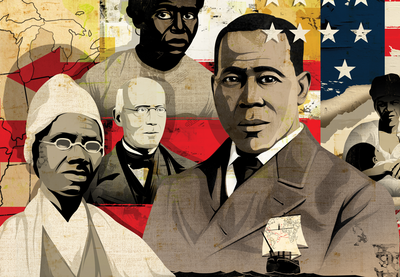Enslaved people worked to preserve their home cultures while creating new traditions.
What Else Should My Students Know?
16.A Native nations continue to develop and thrive, and Indigenous people have had a profound and enduring impact across what is now the United States.
16.B The combination of African and Indigenous foods and ways of cooking with Indigenous foods continue to greatly influence cuisine in what is now the United States.
16.C Enslaved Africans created two of America’s most enduring musical forms: spirituals and blues music.
How Can I Teach This?
- When teaching about Indigenous cultures, take care to show their vitality in the present day. Encourage students to explore the diversity of Native nations using the wealth of resources available from the National Museum of the American Indian.
- Teach students about the roots of gumbo, a dish that combines Indigenous, African and European elements. One traditional component of this dish is an Indigenous ingredient called filé, a powder made from sassafras leaves. Our term “gumbo” derives from a West African word for okra, which is another essential ingredient. The French, the first colonists in Louisiana, contributed flour, which is used for gumbo’s dark roux. Gumbo demonstrates how diverse cultures met in America.
- To learn about the musical variety in spirituals, ask students to compare slower songs such as “Sometimes I Feel Like a Motherless Child” with quicker songs such as “Rock My Soul in the Bosom of Abraham.” Playing contemporary versions of these songs will help students to understand their enduring importance and beauty.
- Listen to songs like “Wade in the Water,” “Steal Away” and “Swing Low, Sweet Chariot,” encouraging students to examine the lyrics and consider how enslaved people might have interpreted them. “Wade in the Water,” for example, offered instructions for people trying to escape bondage, while “Steal Away” was a call for enslaved people to gather covertly.
- Music from contemporary Indigenous artists can help students reflect on the combined legacy of genocide and enslavement for Indigenous people (see, for example, Ulali’s “All My Relations”).
- Exploring the importance of the spoken word in the culture of enslaved people, combined with the percussive traditions of much Indigenous and African music, can lead to a discussion of contemporary hip-hop music and its deep roots.
- Emphasize that although enslaved people had diverse experiences, they shared common interests in preserving families and traditions. Books such as Love Twelve Miles Long and Christmas in the Big House, Christmas in the Quarters communicate this clearly.
